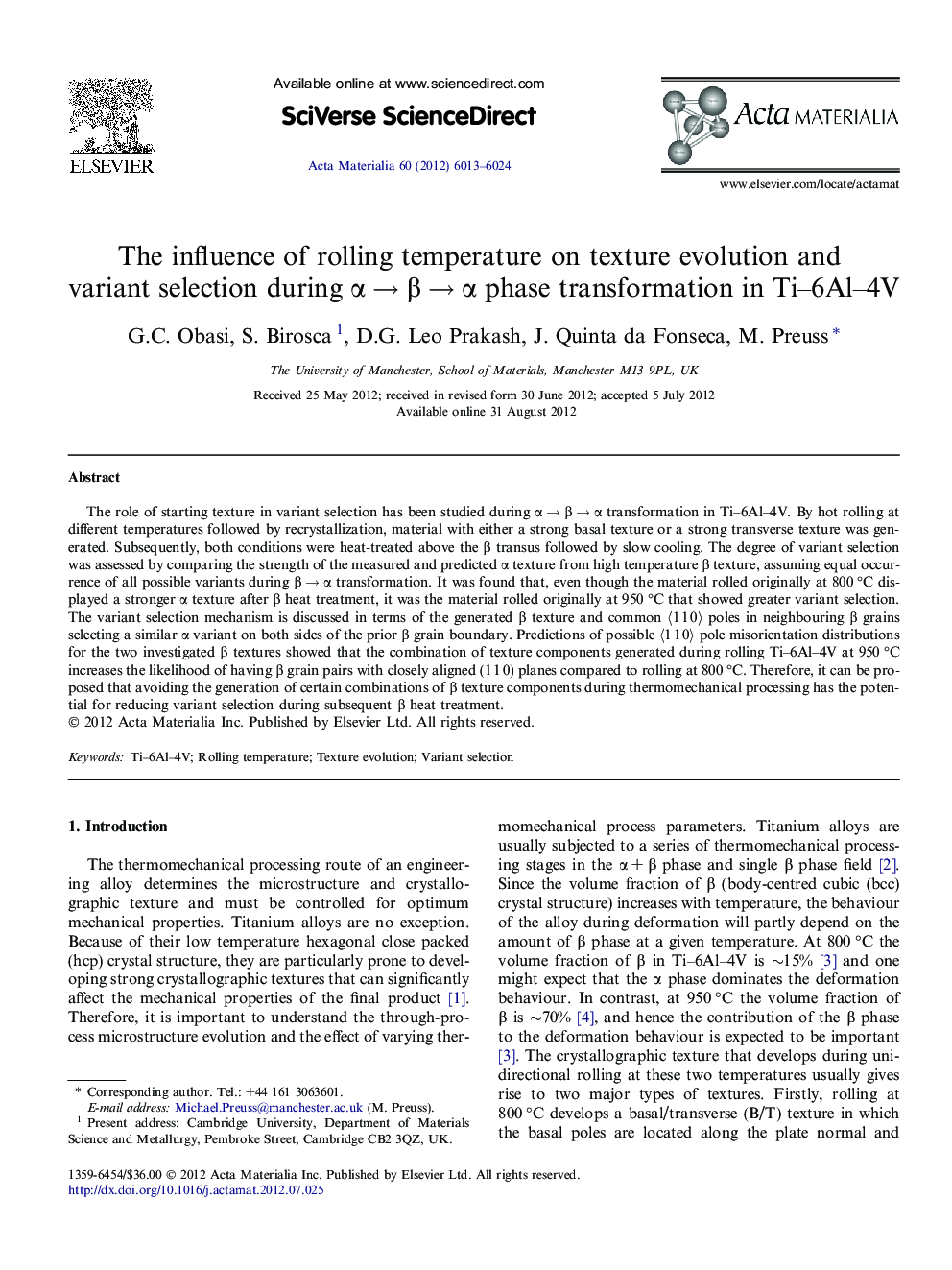| کد مقاله | کد نشریه | سال انتشار | مقاله انگلیسی | نسخه تمام متن |
|---|---|---|---|---|
| 1446557 | 988615 | 2012 | 12 صفحه PDF | دانلود رایگان |

The role of starting texture in variant selection has been studied during α → β → α transformation in Ti–6Al–4V. By hot rolling at different temperatures followed by recrystallization, material with either a strong basal texture or a strong transverse texture was generated. Subsequently, both conditions were heat-treated above the β transus followed by slow cooling. The degree of variant selection was assessed by comparing the strength of the measured and predicted α texture from high temperature β texture, assuming equal occurrence of all possible variants during β → α transformation. It was found that, even though the material rolled originally at 800 °C displayed a stronger α texture after β heat treatment, it was the material rolled originally at 950 °C that showed greater variant selection. The variant selection mechanism is discussed in terms of the generated β texture and common 〈1 1 0〉 poles in neighbouring β grains selecting a similar α variant on both sides of the prior β grain boundary. Predictions of possible 〈1 1 0〉 pole misorientation distributions for the two investigated β textures showed that the combination of texture components generated during rolling Ti–6Al–4V at 950 °C increases the likelihood of having β grain pairs with closely aligned (1 1 0) planes compared to rolling at 800 °C. Therefore, it can be proposed that avoiding the generation of certain combinations of β texture components during thermomechanical processing has the potential for reducing variant selection during subsequent β heat treatment.
Journal: Acta Materialia - Volume 60, Issue 17, October 2012, Pages 6013–6024